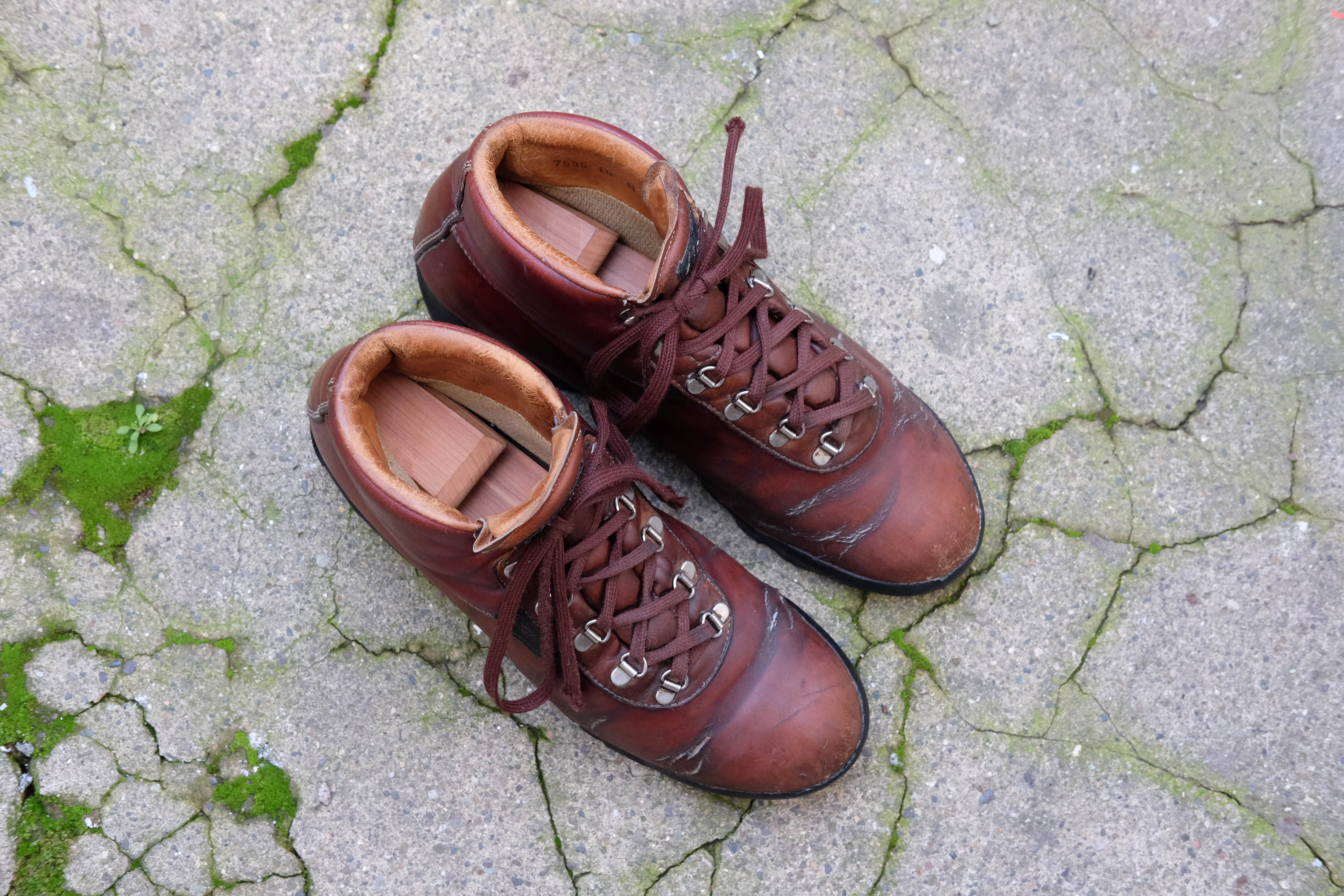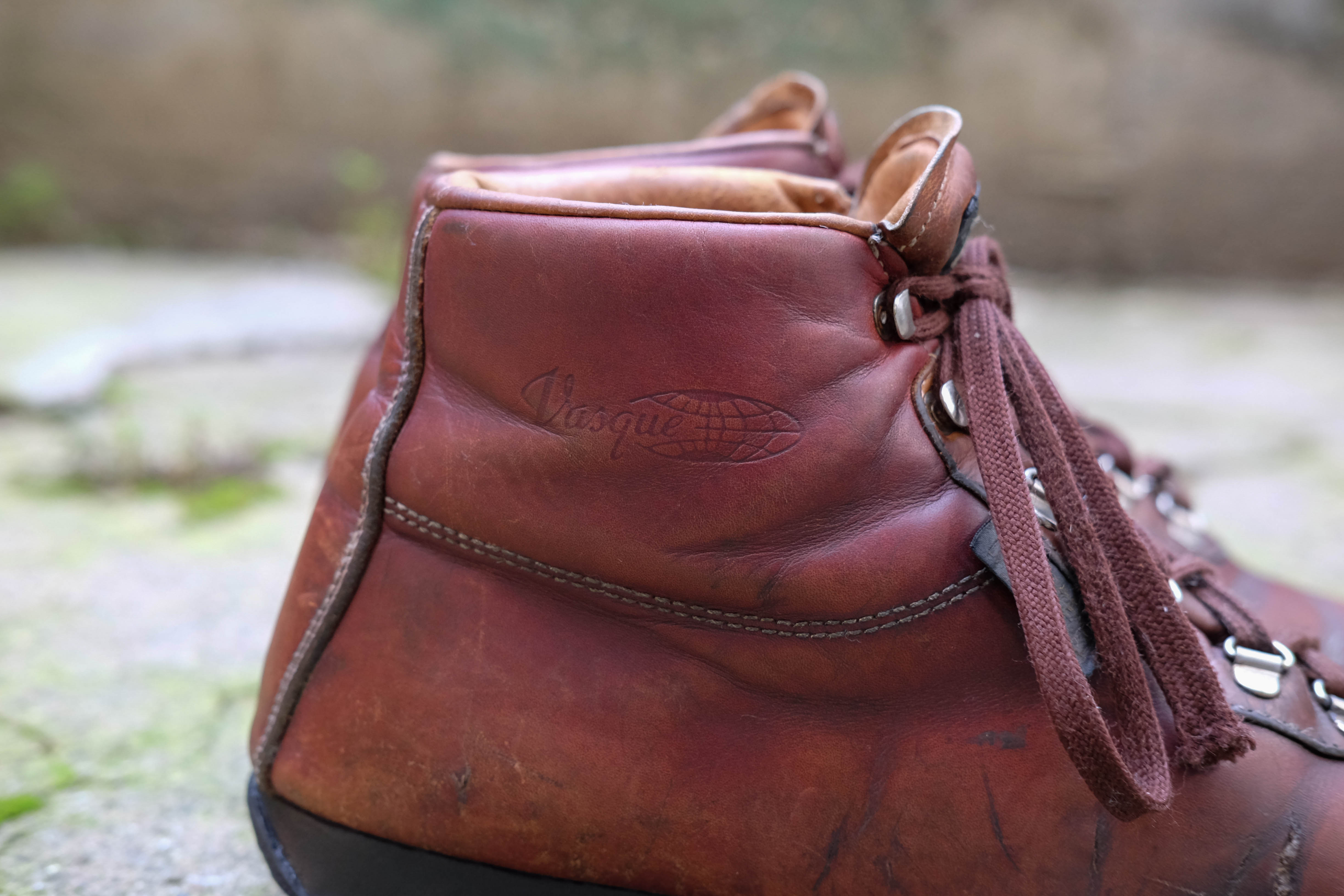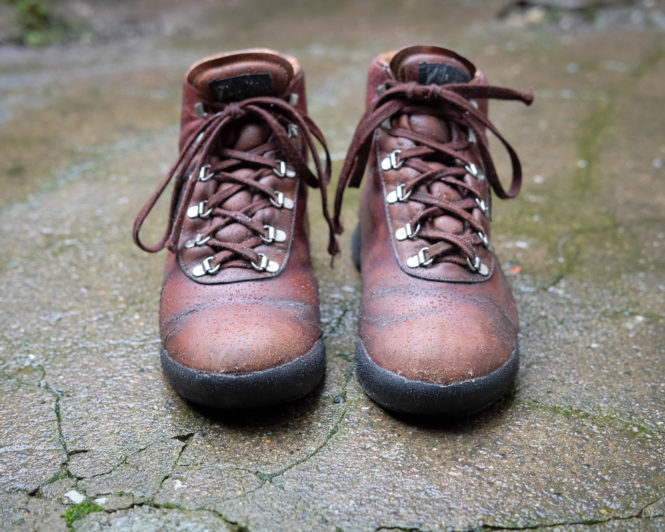I have a unique relationship with this pair of boots – either I’ve completely forgotten that I own them or I wear them every day and can’t imagine not having them. They generally get used as my bad-weather footwear, and occasionally see time as hiking boots as well. They’re old, tough, and were in some serious need for shoe care after a couple months of hard use. I’m also traveling to Scotland and London in two weeks, so once again I’ll be calling on these guys to keep my feet dry in the boggy highlands of the UK in February. In short, it was time to do some serious shoe care.
First, the boots – These are the famed Vasque Sundowners, which became hugely popular when they were introduced in the 80’s. The design features a lightweight construction and a bellows tongue that keeps water from getting in via gaps between the tongue and sides (the tongue is connected to the uppers). I inherited these from my grandfather, who was an avid hiker. Vasque still sells them today, although the design has changed a bit and I’m not convinced that the quality is the same (although I can’t confirm that). I know mine are made in Italy with a nice cowhide, but I can’t find any similar info on the new ones.
As for treating these boots, I went for a classic product – Obenauf’s LP. This beeswax-based formula is meant for deep conditioning of leather as well as upping resistance to water, mud, salt, and so forth. People tend to have polarizing views on Obenauf’s LP, mainly because it will darken leather and change its texture. While this is certainly true, I’m not remotely concerned about the color or feel of these boots, as they’re all about function. If you’re just looking to condition your nice shoes, this probably isn’t the right product. If you want to do some heavy duty conditioning and strengthening of work boots, it could be a good option.
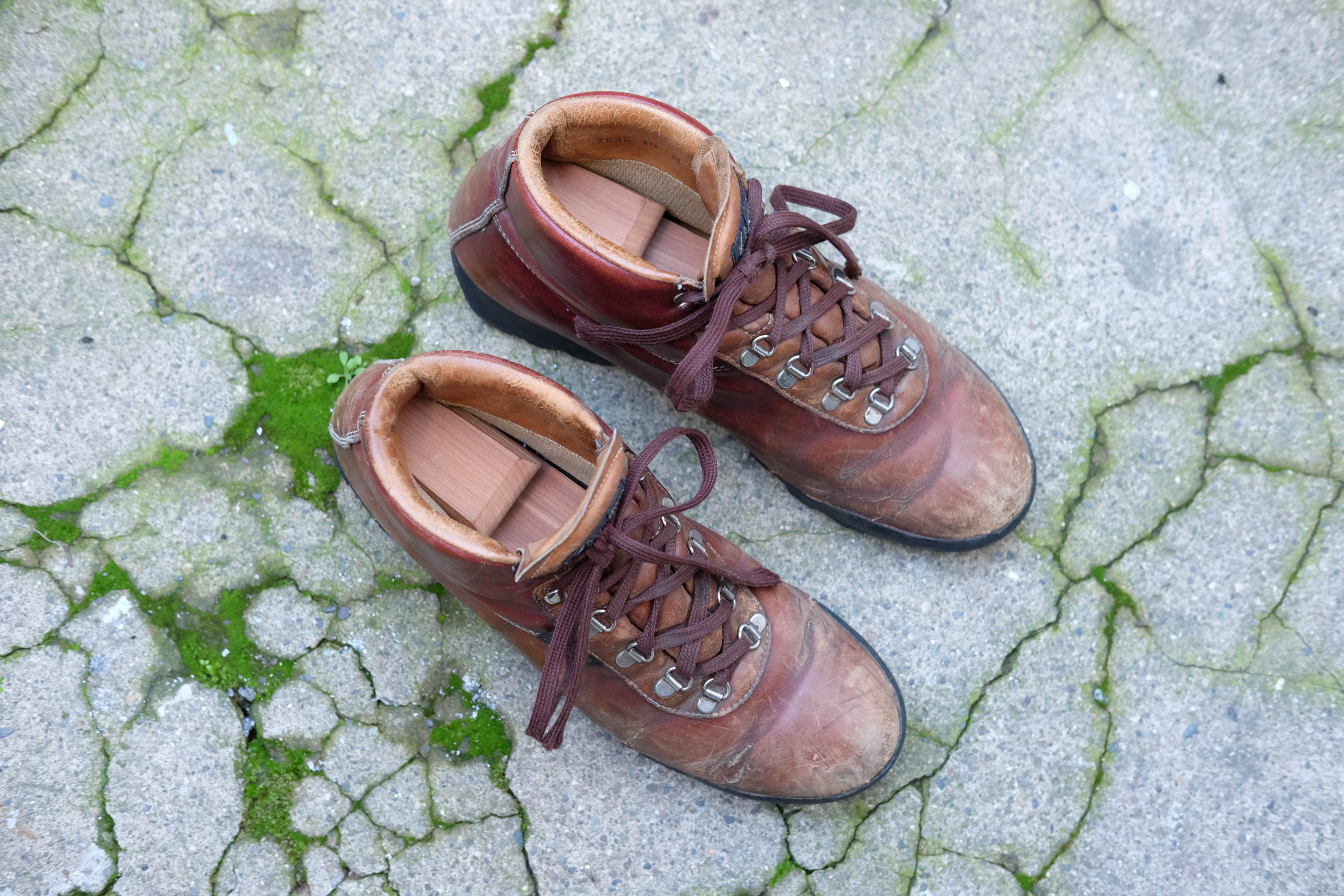
As you can see above, these started out in pretty rough condition. The leather has been worn down in many areas, especially the toe. There are also plenty of cracks in the leather, which I don’t expect any product to fix (there’s not much that can be done for that). Here’s the process I used to condition these boots:
1. Like with all shoe care, I started this routine by removing the laces, inserting shoe trees, and giving a good brush to remove dirt and dust. I also wiped these down with a slightly damp cloth to make sure I was getting any remaining mud and gunk off the shoe. I suppose I could have used a cleaner like Lexol to deeply clean the leather, but in my opinion that sort of solvent is more for removing things like wax – regular dirt and mud doesn’t need much more. This is similar to what ChrisRT8 (who manages the Crockett & Jones store in London and puts his shoes through some serious action) outlines in this article.
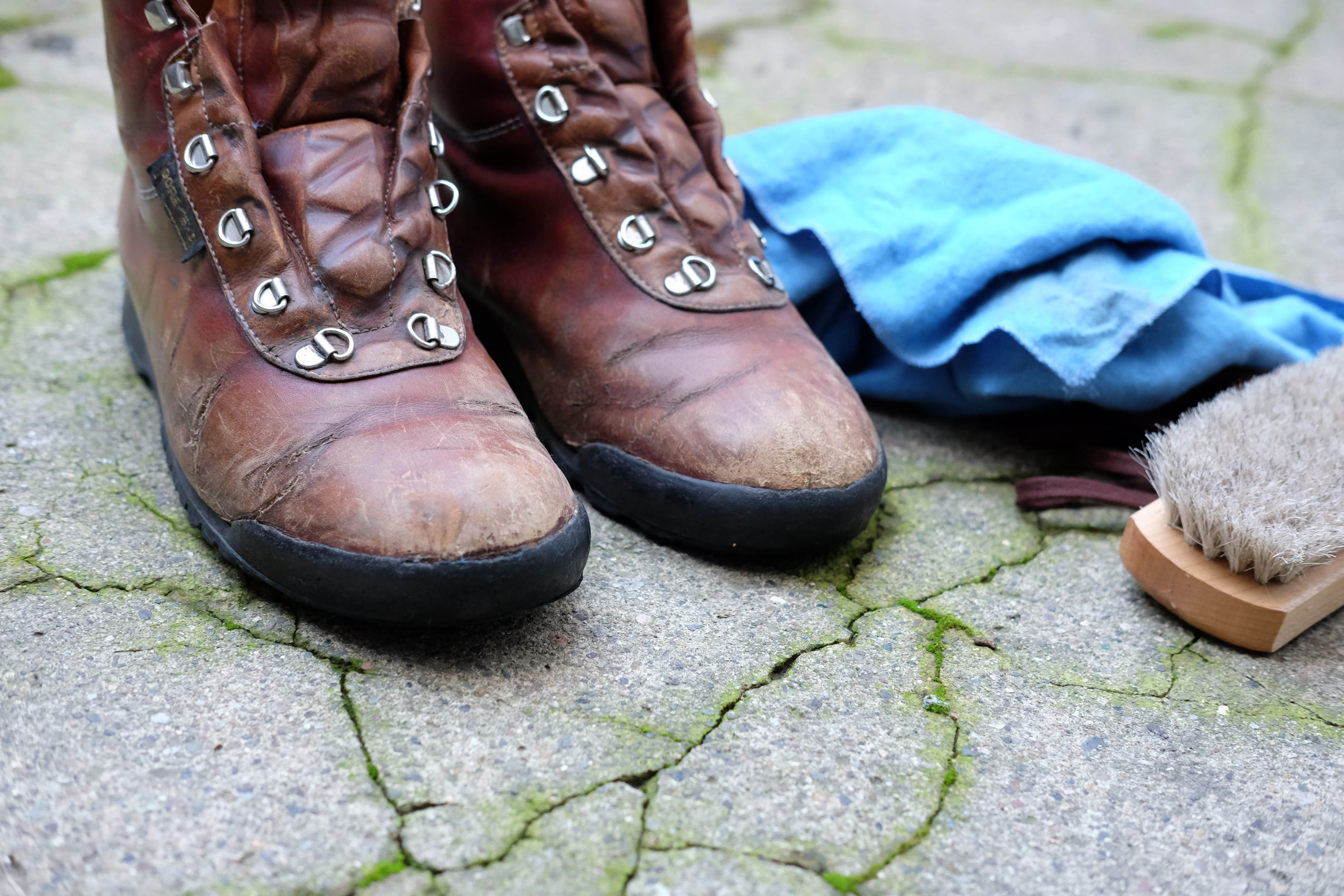
2. Next, I gently warmed both my shoes and the Obenauf’s by placing them in a warm room with a heater on (I didn’t put them next to the heater, as that would warm them too much and could dry out the leather). This is a new step for me; normally I’d just go straight to conditioning, but many recommend doing this first. The wax is rather firm at room temperature, so softening it up a bit does help a bit. In theory, having the leather warm helps it receive the wax better – this may well be true, but I can’t really confirm that.
3. Once they were ready to go, I applied the wax with my hands (again, the added warmth makes it easier to work with). The wax is similar to coconut oil in consistency, in that it’s fairly firm at room temperature but softens significantly with body heat. Unlike my normal approach, I was fairly liberal in my application with Obenauf’s. Generally I feel that less is more when it comes to shoe care, but since I’m looking to get as much of this protector into the leather (and I’m not as concerned with how easily it will buff out), I put a decent amount on. Here’s one without and one with, respectively:
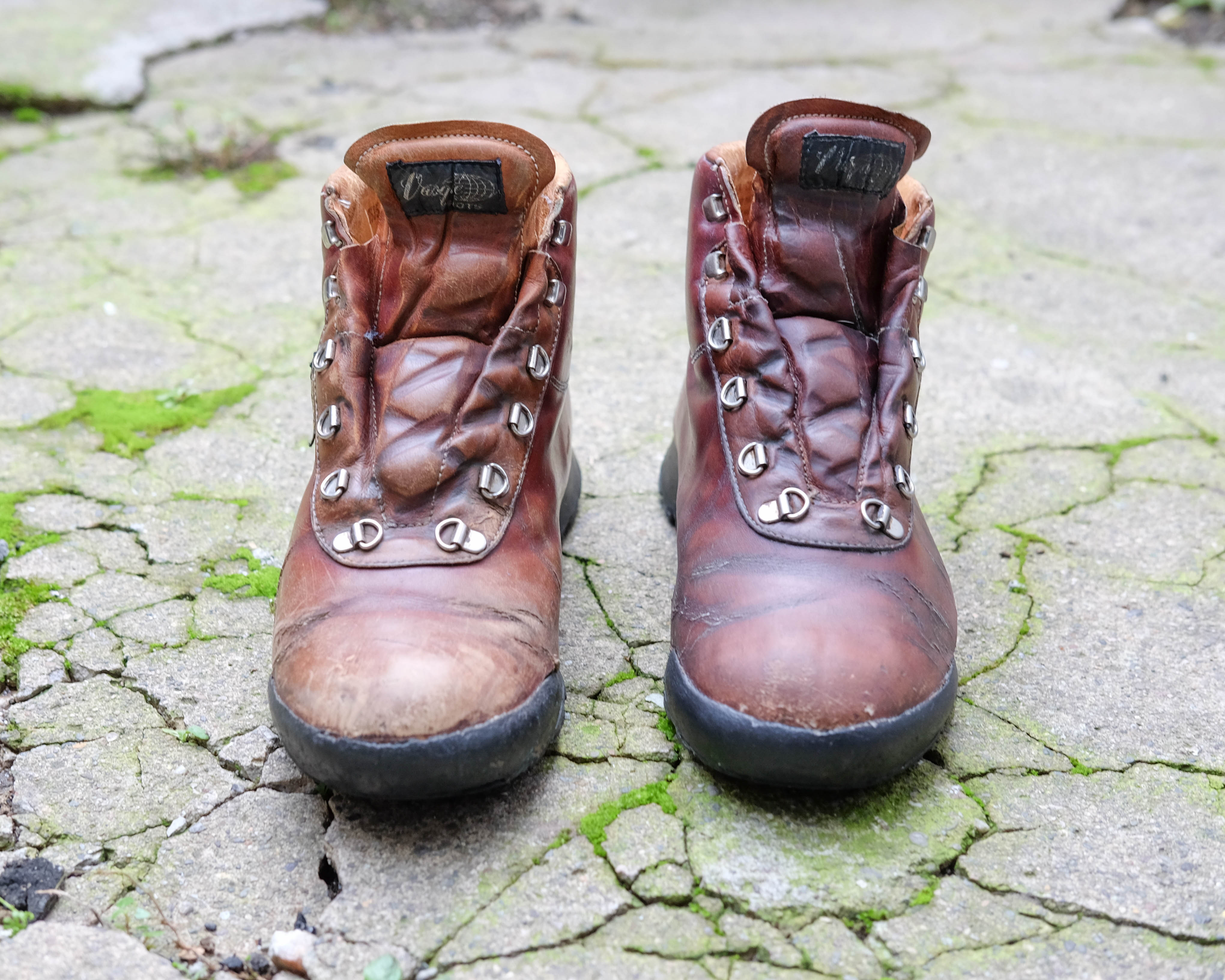
4. After letting the shoes sit for a few hours, I wiped and brushed off any remaining wax. The leather did retain a bit of a waxy texture, but that’s to be expected since I am trying to add a protective layer to these (and I do think it will diminish with use).
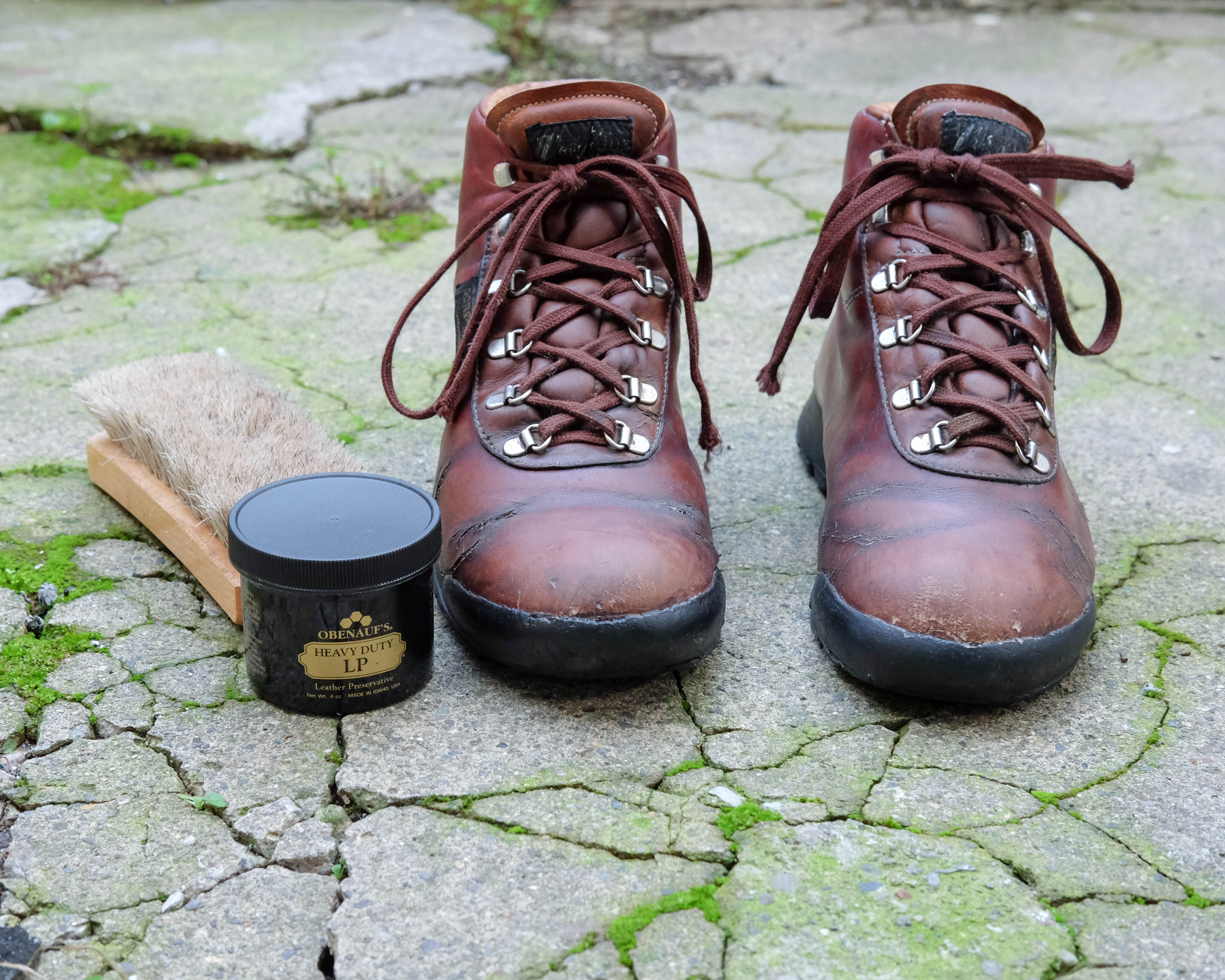
All told, the boots definitely look better off with a coat of Obenauf’s and I think they’ll fare better in rain and mud as well. Like I mentioned before, I wouldn’t recommend this stuff for boots that are more aesthetically driven than functional. I’d reserve Obenauf’s for boots that have performance as their number one use case. And for these, it’s just in the nick of time – looks like it just started raining again.
